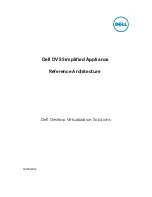
92
Kaspersky Administration Kit
B
Block object
– Prevent external applications from accessing an object. The
blocked object cannot be read, executed, modified, or deleted.
Backing up
– copying data of the Administration server for storage and
subsequent restoration performed by the backup utility. The utility
allows to save: Administration Server database that stores policies,
tasks, application settings, and events logged on the Administration
Server Information about the logical networks and client configurations
Installation files for the remote installation of applications (contents of
the Packages, Uninstall, Updates folders) Administration Server
certificate
BACKUP folder
– A directory that contains backups of deleted and
disinfected objects.
Backup storage
– A folder that contains the backup copies of
Administration Server data created by the backup utility.
C
Console (management) plug-in
– A special component that provides an
interface for remotely managing an application through the
Administration Console. The plug-ins are specific to each application
and are included in all Kaspersky Lab applications that can be managed
through Kaspersky Administration Kit.
Centrally managing an application
– Managing an application through
Kaspersky Administration Kit.
Client, Administration Server
(or
client computer
) – a computer, a server,
or a workstation with the installed Network Agent and managed
Kaspersky Lab applications.
D
Disinfection
– A method of treating infected objects. Disinfection implies
partial or full recovery of data or results in a decision that these files
cannot be disinfected. Objects are disinfected using the anti-virus
database. If disinfection is the first action to be applied to an object, i. e.
the first action after detection of a suspicious object, the program
creates a backup of this file. If some data are lost during disinfection,
you can use the backup to recover this object.
Deleting an object
– A method of handling an object. To delete an object is
to remove it physically from a computer. This method is recommended
for treating infected objects. If deleting is the first action applied to an
object, it is necessary to create a backup of this object before deleting it.
You can use the backup to restore the original object.
E
Exclusions
– User-defined settings that exclude certain objects from scans.
You can customize the exclusion rules for
real-time protection
and
on-
















































